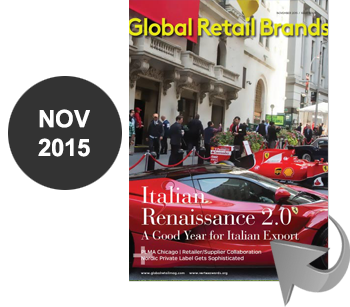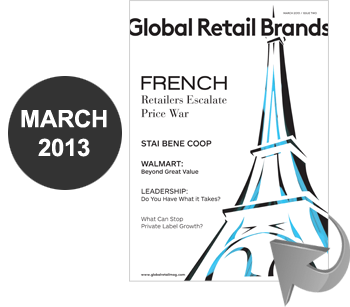From the Wall Street Journal Online, Thursday March 7, 2013, www.onlinewsj.com
MONTESSON, France—Shoppers at one of Carrefour SA’s CA.FR +2.80% largest stores in this suburb west of the French capital have been snapping up the replica jerseys of their local Paris Saint-Germain soccer team while buying their weekly groceries.
It may be only a small perk for customers at Carrefour’s superstore, but store manager Marc Helm hopes that this, along with a number of other initiatives—such as salmon smoked on site and sushi prepared in the store—will encourage thrifty consumers to shop more.
The arrival of the popular soccer team’s shirts in just that hypermarket and not the entire Carrefour fleet nationwide illustrates an effort at the world’s second-largest retailer after Wal-Mart Stores Inc. WMT -0.36% to give more autonomy to its massive all-under-one-roof stores in a bid to stem sliding sales at home.
“Now, with the decentralization, aisle managers can get more involved,” Mr. Helm said.
Chief Executive Georges Plassat, a veteran retailer who took up the position in spring 2012, is moving to turn around Carrefour’s performance, by shedding assets further afield and focusing on operations close to home.
Agence France-Presse/Getty Images
Georges Plassat, Carrefour’s chief operating officer, presents the group’s 2012 results in Paris.
The company on Thursday posted an annual net profit of €1.23 billion ($1.59 billion), a more-than-threefold increase from €371 million a year earlier, notably boosted by the sales of operations in emerging markets.
Mr. Plassat said that the company was entering a new phase with “this period of vibrations” ending. He said Carrefour has no plans to leave more countries and will seek to expand in Latin America and Asia.
But Europe—which makes up close to 70% of Carrefour’s sales—is critical to any sustained turnaround for the retailer. While the grocer’s bottom line was lifted by asset sales, operating profit declined, hit by a 21% drop in Europe, as sales slid in Spain and Italy despite Carrefour slashing prices.
There were signs, however, that the groundwork being laid at home by Mr. Plassat might be starting to pay off, with operating income in France rising 3.5%.
Carrefour’s domestic hypermarkets—which make up about one-quarter of the grocer’s global sales—have been the cornerstone of the company for several decades. But an inconsistent strategy on pricing, the stagnant French economy and a shift by many French shoppers toward online shopping or smaller stores has led the business to lag behind rivals.
While large competitors such as E. Leclerc focused on promising rock-bottom prices everyday, Carrefour’s price policy has yo-yoed over the years, the most recent switch being a major cutback in promotional offers and the introduction of a simpler strategy offering low-price guarantees on 500 everyday products.
The broad-line retailers that “relentlessly focused on the same message for years and years…have gone through the recent period of turbulence relatively comfortably,” says Marc-André Kamel, head of EMEA Retail Practice for Bain & Co.
Mr. Plassat said Carrefour’s business in France was now recovering “thanks in particular to the price strategy which has been in place for a year.”
A deeply centralized buying policy also hindered the ability of managers to draw in local shoppers. Workers say top-heavy decision-making routinely led to excess stock of some products and gaps in supplies of others.
“Stores in the north of France would receive large quantities of parasols, even though it rains there most of year,” said Jean-Yves Chaussin, a union representative at Carrefour.
Mr. Plassat has been moving steadily to give all Carrefour stores more independence, while keeping buying centralized for products that benefit from large-scale purchases. “It is imperative to put the customer at the center of our thinking,” he said, arguing that giving store directors the capacity to adapt to local demand was crucial to this.
He also stressed the importance of continuing refurbishments in stores, saying that the company plans to remodel 150 of its 220 French hypermarkets in the coming years, with 35 store renovations already in the pipeline for this year.
At Carrefour’s hypermarket in Montesson, which is about the same size as more than three soccer fields, recent renovations are playing a part in customers’ perception of the store.
“Here it’s luxurious. It’s magnificent. It makes you want to shop,” said André Loubet, a retired psychologist visiting the store for the first time.
Investors appear to believe that a turnaround for the company is under way, with shares up about 50% since Mr. Plassat’s first public presentation as CEO in June last year. Carrefour’s stock rose 2.9% to €22 in Paris Thursday.
“The positive [of Thursday’s release] is the resilient performance in France,” said Cheuvreux analyst Arnaud Joly.






















































